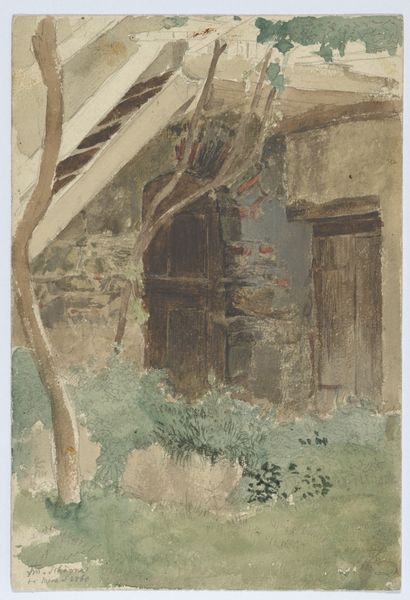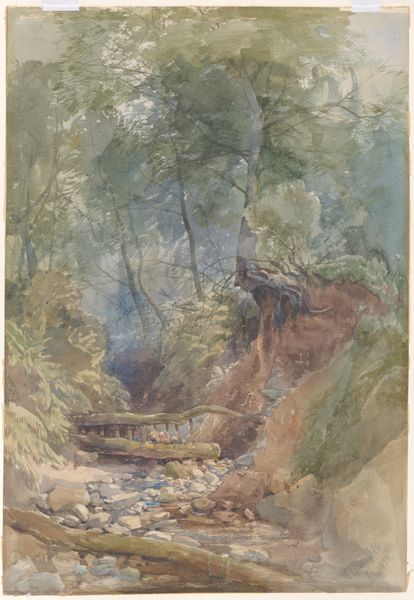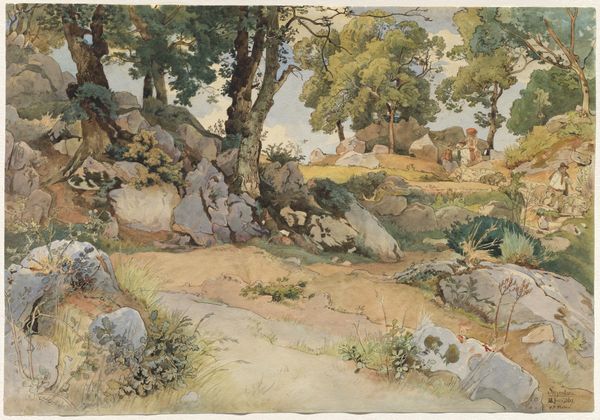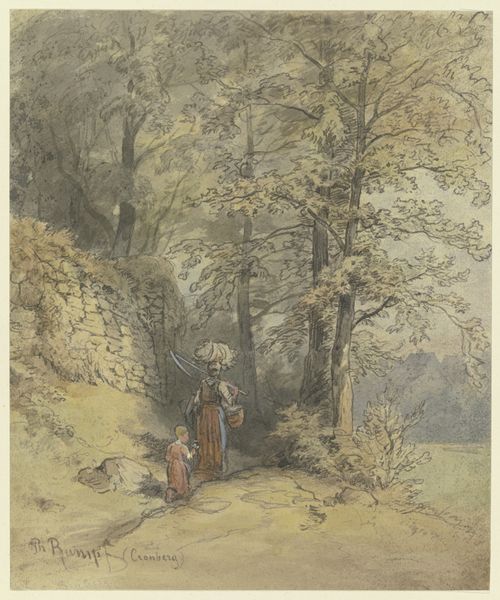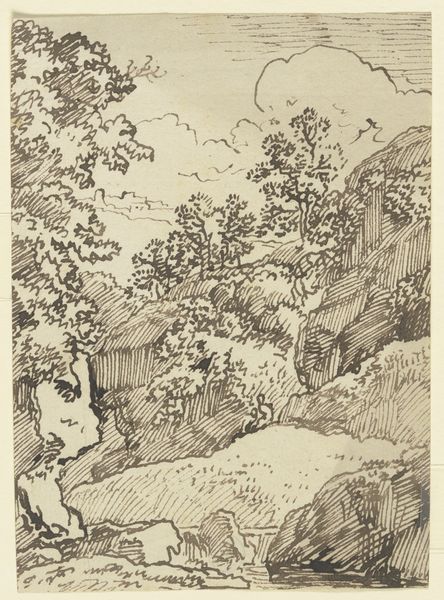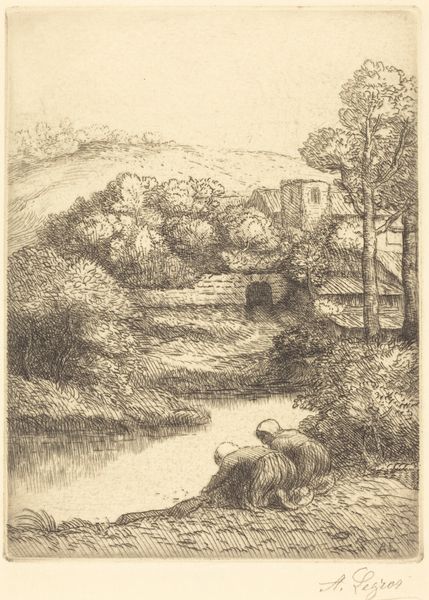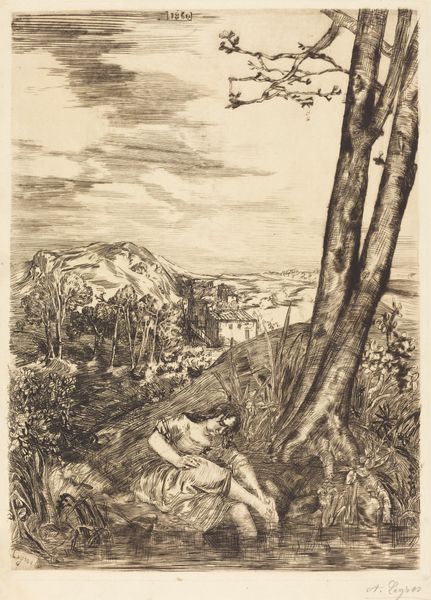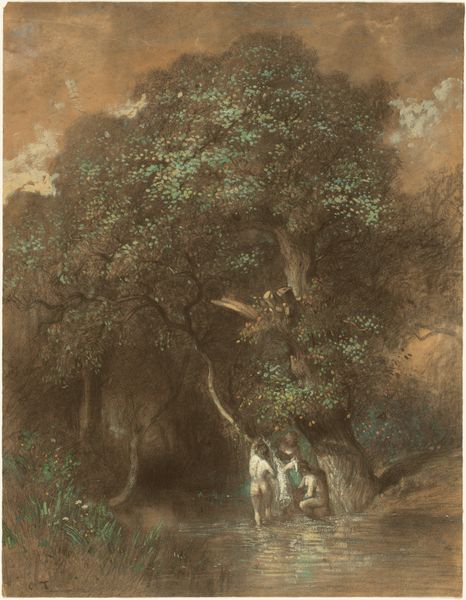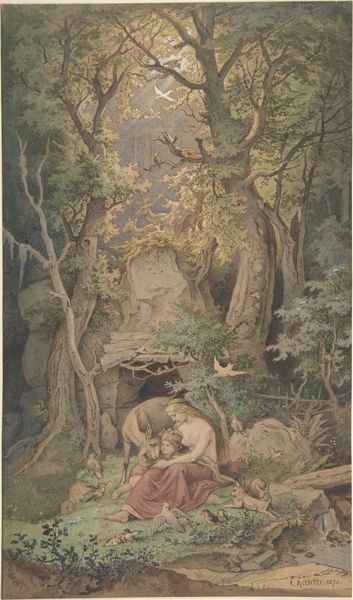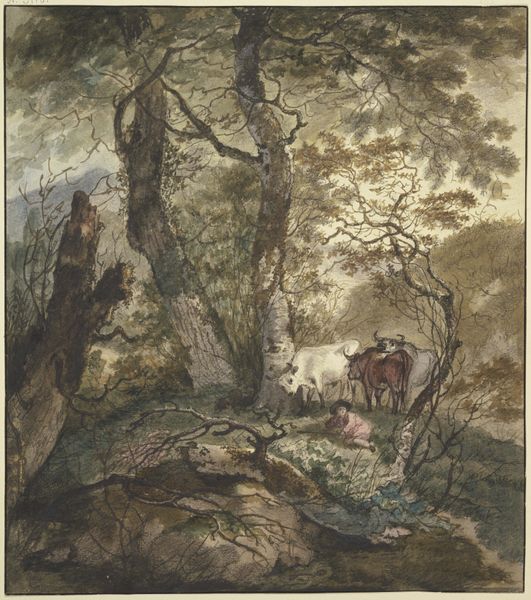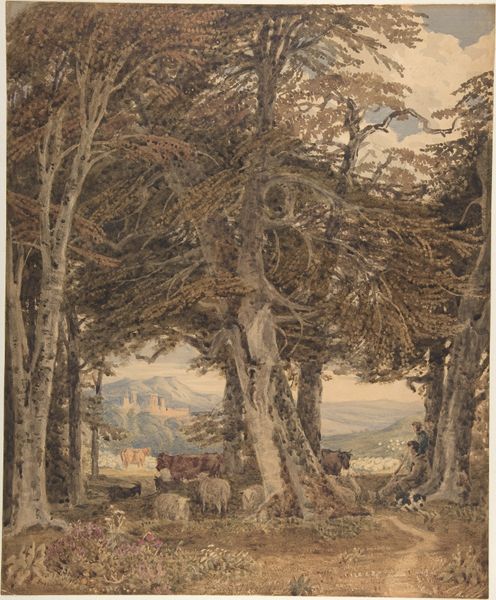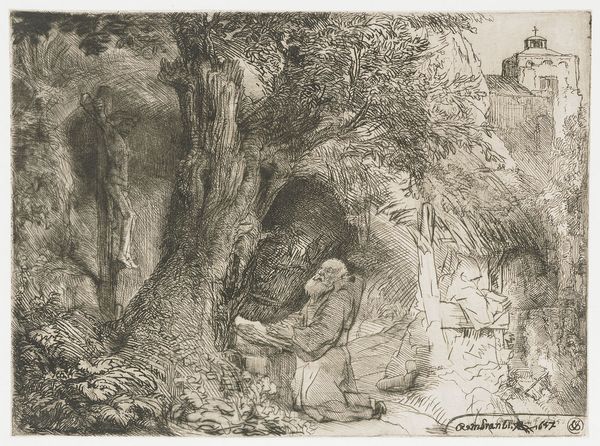
drawing, plein-air, watercolor
#
drawing
#
plein-air
#
landscape
#
oil painting
#
watercolor
#
naïve-art
#
naive art
Dimensions: image: 21 x 18.6 cm (8 1/4 x 7 5/16 in.)
Copyright: National Gallery of Art: CC0 1.0
Curator: Here we have Karel Vitezslav Masek's watercolor painting "Stary Hrosenov", created in 1889. What strikes you immediately about it? Editor: The scene is peaceful, almost idyllic. The muted palette lends the painting a sense of nostalgia. Curator: Indeed. This work fits into a larger discourse around the commodification of the rural ideal within Czech nationalism during that era. Consider the implications of depicting a 'Stary' – Old – village. What stories is the artist telling us about Czech identity through landscape? Editor: The emphasis on plein-air is vital. Note how Masek captured this scene en-site, reflecting a dedication to ruralism. It speaks to a desire for unmediated access to this specific location's reality. Curator: Yes, but what about the labor implicit within the construction of the thatched roof, for example? This piece begs consideration around the lived realities of those residing within this "idyll". Editor: Absolutely. The thatching utilizes specific, readily available materials – reeds or straw, tightly bound. It illustrates an understanding of craft, sustainability, and how those things translate into community. What social dynamics allowed a painting such as this to surface in a culture obsessed with idealization? Curator: Excellent question. You're inviting us to explore how images like this actively shape national narratives, sometimes overlooking class dynamics inherent in the romanticization of peasant life. The solitary figure, rendered simply, what narratives of belonging – and exclusion – might be circulating around this presence? Editor: Masek’s treatment of the materials - the watercolor bleeding across the paper - amplifies this sense of place. One gets the sense of damp earth and soft light as both sensory data and commentary of working with immediate surroundings. Curator: The dialogue you initiate between environment and material process offers critical possibilities to contextualize Masek's vision. The work then presents itself as an intersection, actively participating in both the creation – and critique – of the cultural landscape in which it operates. Editor: And in considering the labor and the location captured together, we open the scene up for continued examination of these values within today's environmental discussions.
Comments
No comments
Be the first to comment and join the conversation on the ultimate creative platform.
